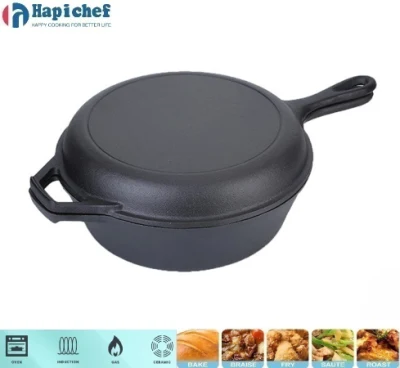Using OEM Cast Iron Pans on Glass Stoves for Optimal Cooking Performance
Using OEM Cast Iron Pans on Glass Stoves A Comprehensive Guide
Cooking enthusiasts appreciate the versatility and durability of cast iron pans. When you hear cast iron, it's likely you envision robust cookware that can withstand the rigors of high-heat cooking. However, many people are unsure whether these heavy pots and pans can be safely used on glass stovetops. This article explores the compatibility of OEM cast iron pans with glass stoves, and offers tips for optimal use.
Understanding Glass Stovetops
Glass stovetops have become a popular choice in modern kitchens due to their sleek appearance and ease of cleaning. However, they require a bit more care than traditional gas or electric coil stoves. Glass cooktops are designed to distribute heat evenly, but they can be susceptible to scratches and damage from heavy cookware. It's essential to select your cooking tools carefully to maintain the integrity of the surface while achieving the desired cooking results.
Cast Iron Pans on Glass Stoves
OEM cast iron pans are known for their exceptional heat retention and even cooking. They are suitable for a variety of cooking methods, from frying and sautéing to baking and roasting. But when it comes to using them on a glass stovetop, you need to do a few things to ensure safe and effective cooking.
1. Weight Consideration Cast iron pans are significantly heavier than most other cookware. While they can be used on glass stovetops, it's important to lift them rather than sliding them across the surface. Dragging a heavy pan can cause scratches or cracks on your glass stovetop.
oem cast iron pan on glass stove

2. Flat Bottoms Ensure that your OEM cast iron pan has a perfectly flat bottom. A warped base can create uneven contact with the glass surface, leading to hot spots that can damage the stovetop or the pan itself. Many manufacturers design their cast iron cookware with this in mind, but it's worth checking.
3. Heating Gradually When cooking with a cast iron pan on a glass stove, it’s advisable to start with low to medium heat. Gradually increase the heat as needed, allowing the pan and the cooktop to adjust to temperature changes. This practice prevents thermal shock, which could crack the glass surface.
4. Avoiding High Heat Although cast iron cookware can withstand high heat, glass tops typically perform best at medium temperatures. High heat can cause uneven cooking and may damage the stovetop over time. Always monitor the heat level when using cast iron.
5. Use the Right Cookware Size Ensure your cast iron pan is appropriately sized for the burner. A pan that is too large can lead to heat escaping and inefficient cooking, while a pan that is too small may not make full contact with the burner.
6. Cleaning and Maintenance After cooking, let the pan cool before cleaning it. Sudden temperature changes can warp your cast iron. For cleaning the glass stovetop, use a gentle scraper or specialized cleaner to avoid scratching the surface.
Conclusion
Using OEM cast iron pans on glass stoves can be an excellent choice for home cooks who appreciate quality and performance. By following the proper guidelines—such as lifting rather than sliding, using a flat-bottomed pan, and managing heat levels—you can enjoy the benefits of cast iron without compromising the condition of your glass cooktop. With a little care, you can create delicious meals while preserving the longevity of both your cookware and your stove. Happy cooking!
-
Why Every Kitchen Needs a Casserole Cast Iron DishNewsJun.24,2025
-
Experience the Tradition and Quality of Cast Iron CookwareNewsJun.24,2025
-
Double Sided Cast Iron Grill PanNewsJun.24,2025
-
Cast Iron Dutch Ovens You’ll Actually UseNewsJun.24,2025
-
Buy Cast Iron Griddle for Everyday CookingNewsJun.24,2025
-
Barbecue Iron Grill Cooking PowerNewsJun.24,2025
-
Standard Product Lines from Cast Iron Cookware SuppliersNewsJun.11,2025
